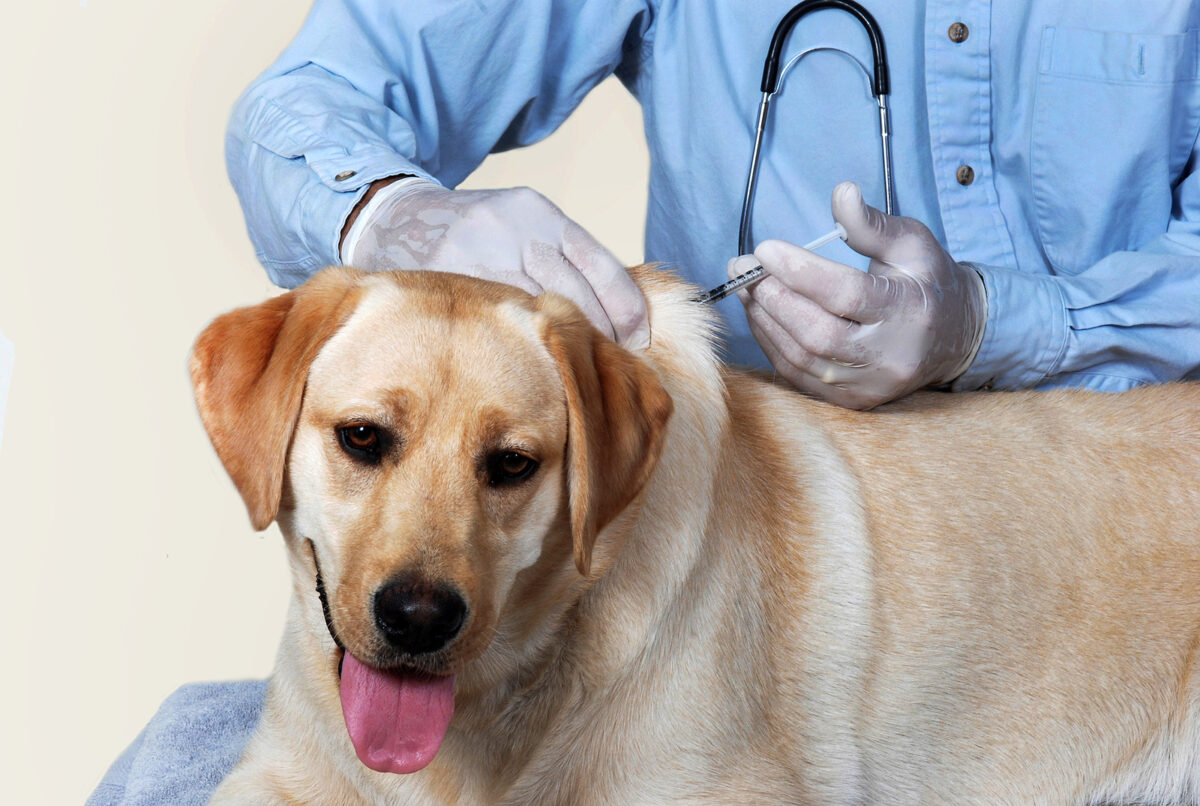Before I moved to Texas, my allergies were like a normal person’s allergies–occasional sniffles, but no big deal. After living here for several years, I had to start getting 3 allergy injections into my upper arms every four weeks. I hate the sting of the needle and the feeling of cold liquid slowly going into my arm, and the second the nurse calls me back to the treatment area, I start getting nervous because I know that pain is coming.
Many pets have a similar experience when they’re at the vet for their annual vaccinations. Over repeated visits, they learn that when their skin is touched and lifted, something painful and cold will follow. Sometimes this even happens in the course of the same visit when multiple vaccines are required, and by needle poke number two, a pet may move away or stop eating the squeeze cheese generously spread on the counter by the vet staff.
The good news is that pet parents can do some vaccination training at home to make the experience less scary. Your pet should have already gone through the material in the restraint training article in the resources section below before moving onto this material.
Vaccines are typically given in the front or hind legs, so start by touching your pet on their back, then trail your hand to end at their outer shoulder/ thigh and give a treat. Repeat multiple times so your pet gets used to having a hand on those areas of their body. Next, trail down and loosely pinch about an inch of skin between your fingers, then treat and let go. When your pet is used to having their skin pinched, try trailing, pinching, and lifting their skin about an inch and giving a treat before letting go.
The last step is safely simulating a needle poke by lightly pressing the tip of a ballpoint pen in the lifted skin between your fingers, using a verbal marker to indicate that a reward is coming, letting go, and then giving a treat or other favorite reward. Use pea-size, super-tasty treats. As with most training, short sessions spread over many days are best.
If your pet tenses or moves away, break and regroup until the next session to keep the experience positive. Cat owners should also practice handling the lower legs below the elbow and knee as these are the preferred feline vaccination sites for many veterinarians.
Beyond training, there are additional ways you can prepare your pet for vaccinations. If your pet has a fear of the vet, make sure to give anti-anxiety medications as prescribed and follow Fear Free tips such as bringing your pet to the clinic hungry unless medically contraindicated.
If your pet has a history of crying, hiding, or trying to bite after vaccines, talk to your veterinarian about prescribing pain medications before their annual visit. You can also ask for a recommended over-the-counter lidocaine numbing cream that can be applied to your pet’s skin a few hours before their visit to reduce pain from needle pokes.
Fear and pain go hand in hand, and keeping your pet comfortable helps avoid a more fearful experience at the vet. While your pet may never learn to enjoy vaccines, a little training and preparation can go a long way toward making them as Fear Free as possible.
This article was reviewed/edited by board-certified veterinary behaviorist Dr. Kenneth Martin and/or veterinary technician specialist in behavior Debbie Martin, LVT.








